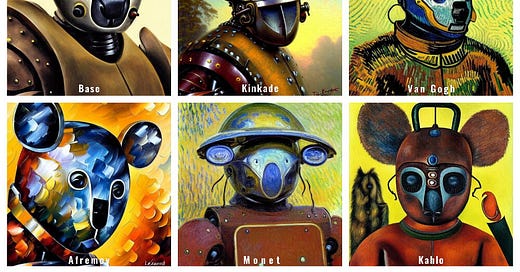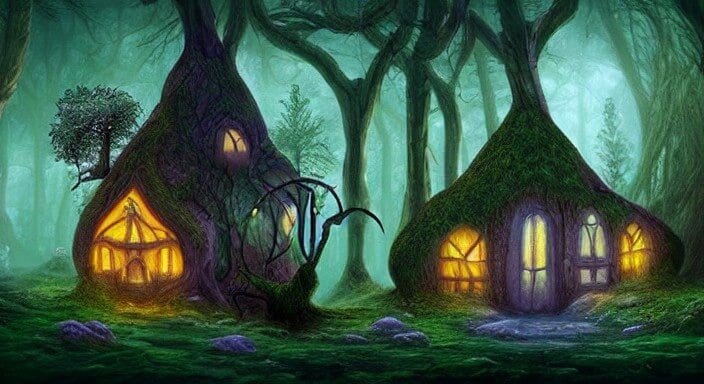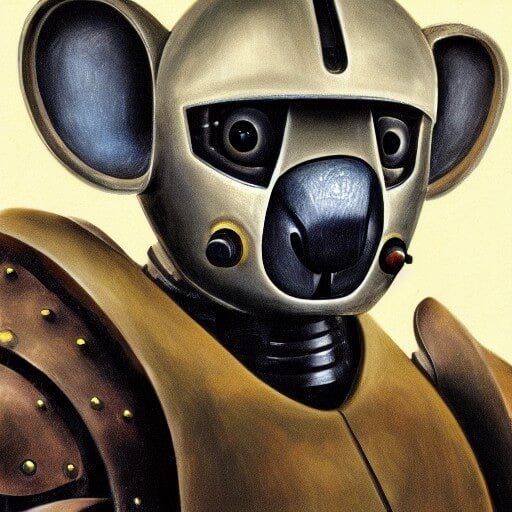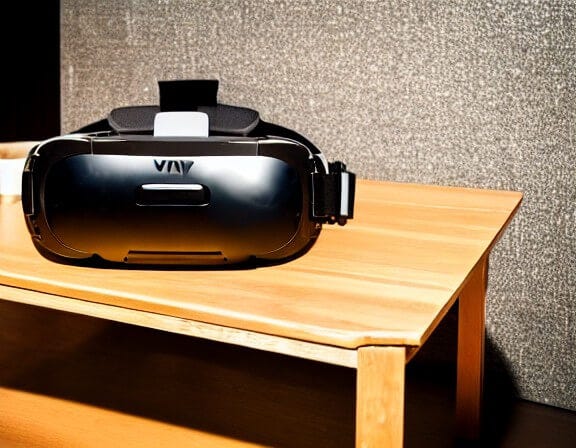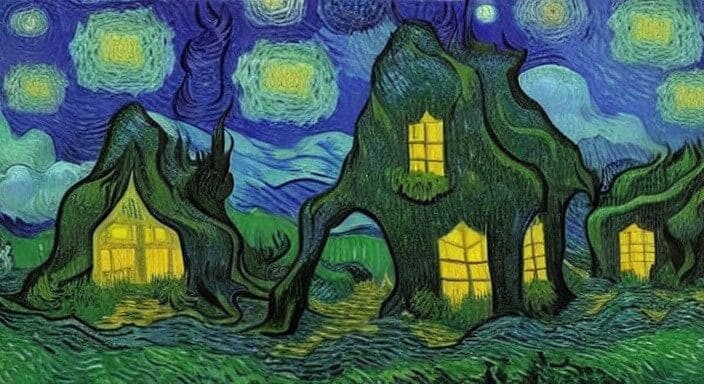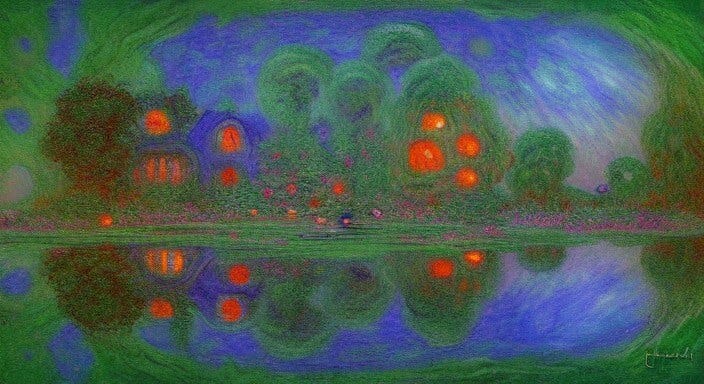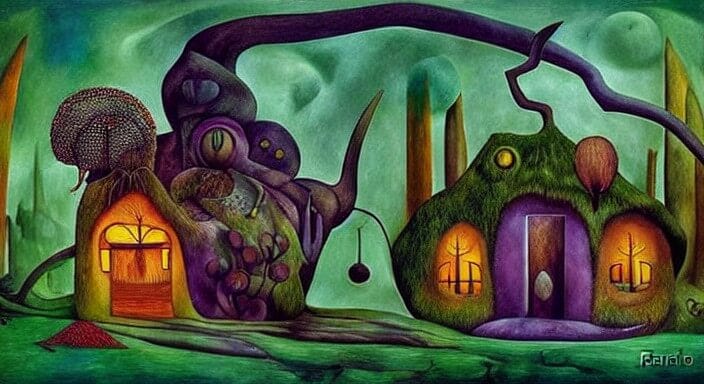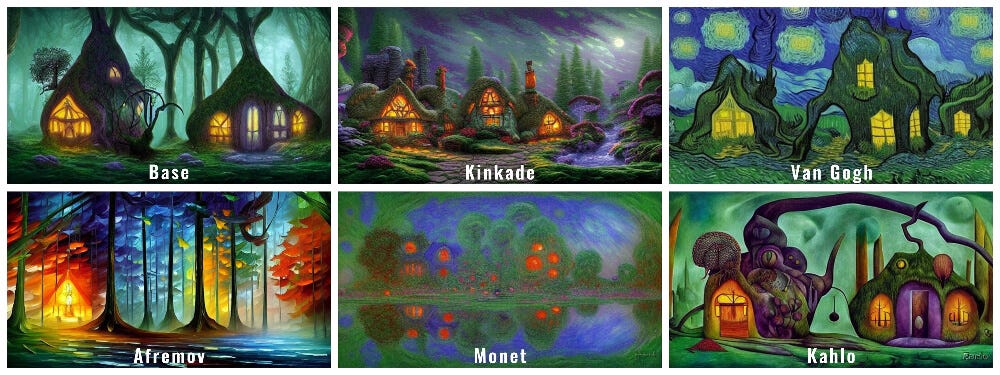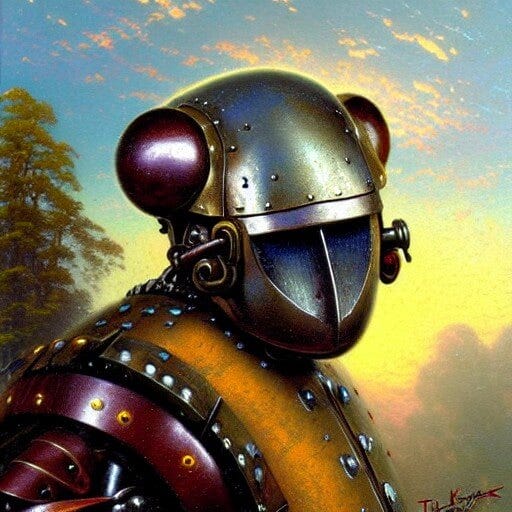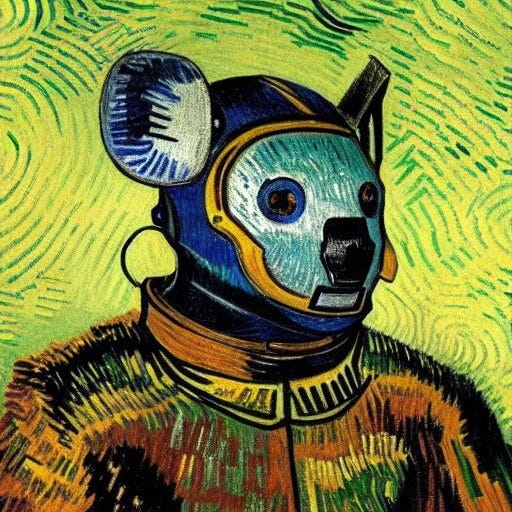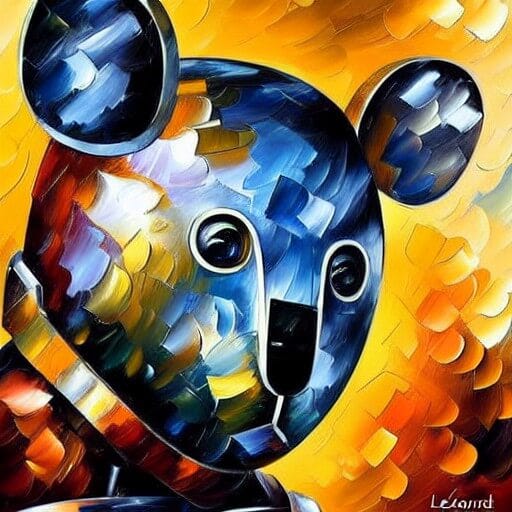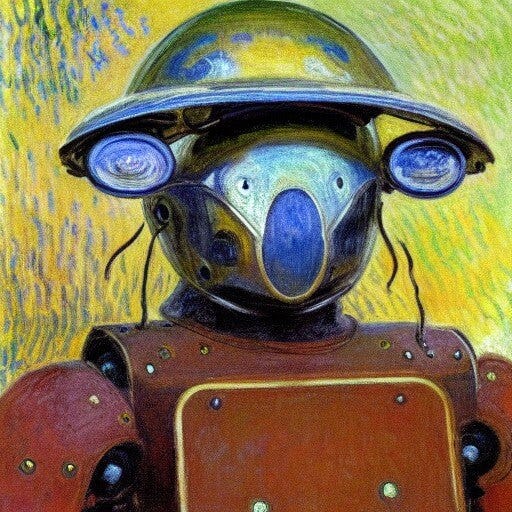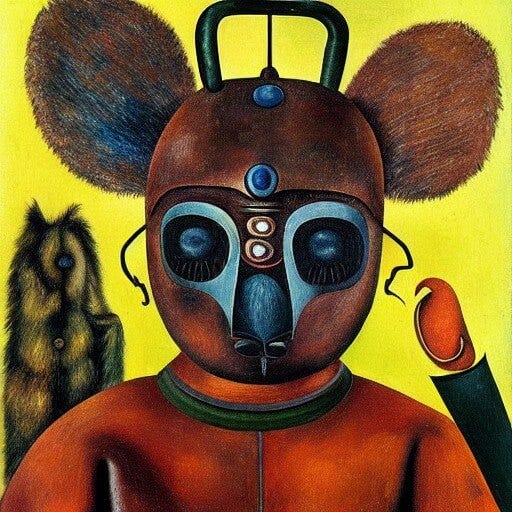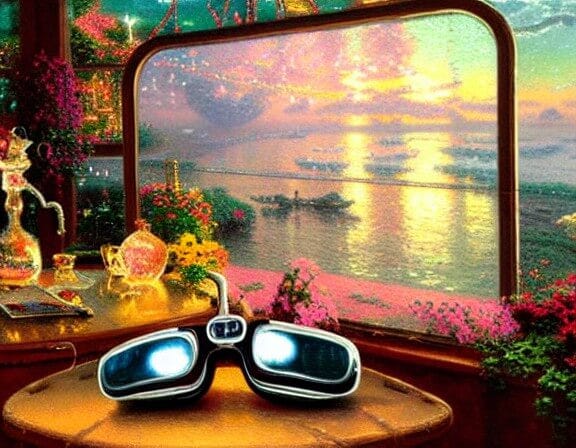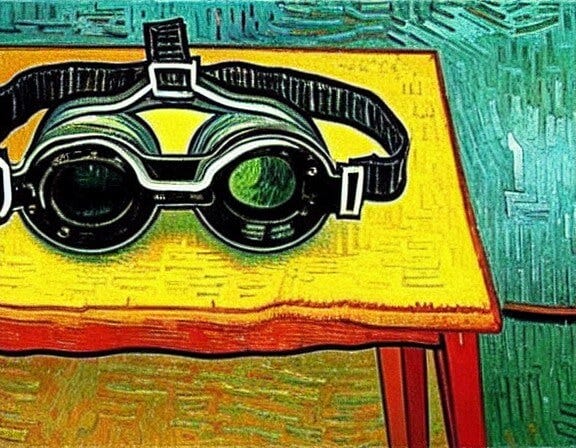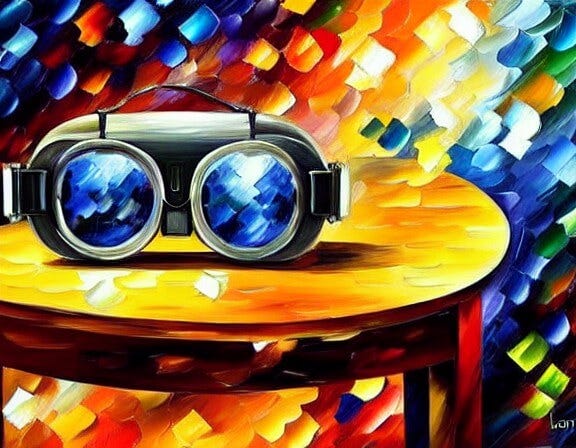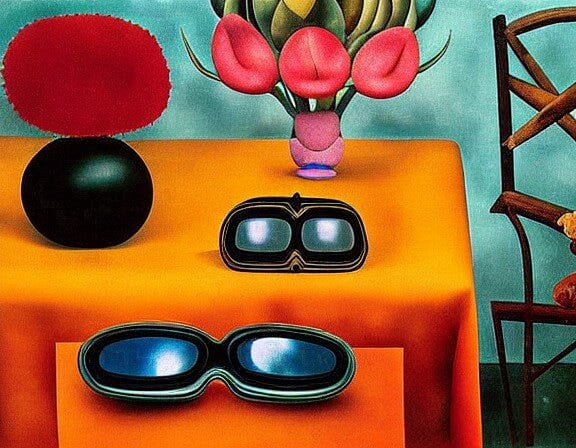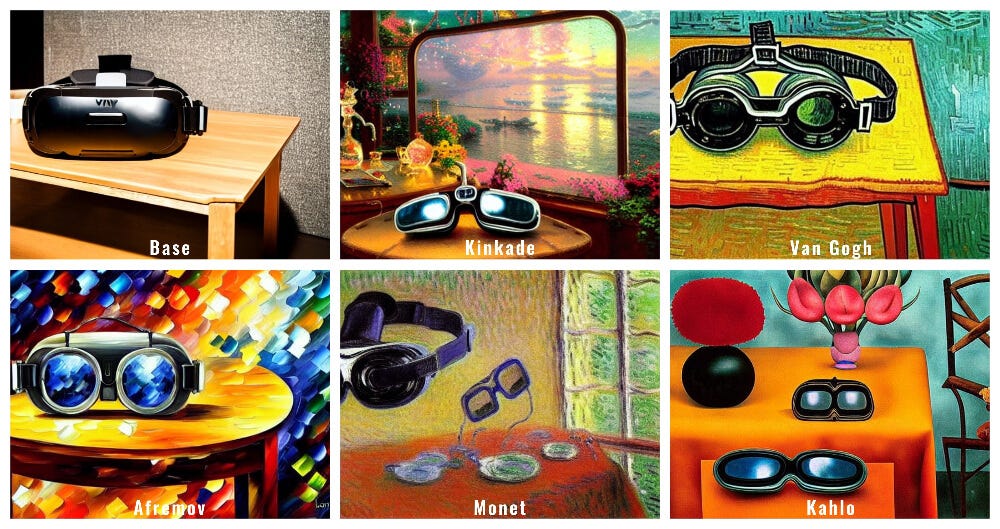AI Art Experiment: 3 Prompts, 5 Artists
What if Vincent Van Gogh painted a robot koala? Showcasing the impact of the "artist" tag on text-to-art images.
In case it wasn’t abundantly clear before, I’m not a great artist. Or, you know, an artist.
But I know the names of several artists, and that’ll be enough for what we’re doing today.
Let’s run a little experiment to see how different “artist” tags alter the look of AI-generated images.
Here’s what we’ll do:
Create base images for three major types of painting:
Landscape
Portrait
Still life
Use the names of the following five artists to alter our base images:
Enjoy all the pretty AI art!
I want to test just how much of an impact changing the artist has while keeping everything else fixed.
If you’re curious about the process, there’s a “Methodology” section at the very end.
If you just want to watch artificial intelligence do some painting, let’s go!
Base images
I wanted our base images to be unconventional in their own right.
I also wanted to give the algorithm a bit of a challenge by forcing it to imagine scenarios that our artists haven’t ever actually drawn.
So here are the text prompts I’ve used and the resulting base images.
Landscape
Prompt: Fantasy cottage in an otherworldly forest on an alien planet
Portrait
Prompt: Portrait of an iron robotic koala warrior in a helmet
Still life
Prompt: Still life of shiny VR goggles on a glass table
Now that we have our base images, let’s put them through the artist filters!
Landscapes by our 5 artists
It’s interesting that while some artist tags keep the overall composition largely intact, others change things up quite dramatically.
Thomas Kinkade
Vincent Van Gogh
Leonid Afremov
Claude Monet
Frida Kahlo
Collage of all 6 cottages
Portraits by our 5 artists
Here, the overall composition isn’t as severely affected, but the koala and helmet details vary a lot!
Thomas Kinkade
Vincent Van Gogh
Leonid Afremov
Claude Monet
Frida Kahlo
Collage of all 6 koalas
Still life by our 5 artists
There’s again consistency of composition between many images, with a few clear exceptions.
Thomas Kinkade
Vincent Van Gogh
Leonid Afremov
Claude Monet
Frida Kahlo
Collage of all 6 VR goggles
Observations
As you can see, simply adding the “by [artist name]” tag has a massive impact on the final image, even when every other setting remains exactly the same (see my “Methodology” notes below).
That’s not too surprising: The artist defines so much more than a single individual descriptor in a prompt. Artists have their unique styles, preferred color palettes, techniques, materials, and more.
So if you want to coax a certain look out of AI art, it definitely helps to find an artist that closely resembles what you’re after.
At the same time, you should use the “artist” parameter with some caution. Because this tag is so dominant, it can quickly take your image into an unexpected direction, making it harder to control your overall composition and specific details.
Then there’s the non-trivial issue of grabbing an artist’s style wholesale and the ethical implications of doing so. At the very minimum, I’d encourage you to at least credit any artists you use in your prompts. Better still, try to work with generic style descriptions and ideas of your own instead of relying purely on a known person’s work.
Here are all the images again as a video slideshow:
Over to you…
Have you tried using “by [artist name]” tags in your text-to-art prompts? If so, do you have a favorite artist or a combination of artists? What other descriptors do you use to get the results you want?
Drop me an email or share in the comments! I’m always curious to learn.
Methodology
Here’s a bit more about the process, for those who’re into this sort of thing.
Picking the artists
To settle on my five artists, I simply went with the ordered list from this site: https://www.urania.ai/top-sd-artists
It ranks artists based on how often they’re represented in the Stable Diffusion model. This meant that picking them would guarantee that the algorithm had lots of references to go on.
One exception: #5 on the list was actually Edward Hopper. But by that point we were well over our “white dudes” quota, and I wanted to add a female artist to the mix.
Frida Kahlo was the first woman on the list at #11.
Generating the images
I used the dreamlike.art site to create all of the images.
I generated a bunch of pictures for each of the three base prompts and picked my favorite to use as the base image.
To make sure our results were comparable, I’ve kept all settings except the “by [artist name]” tag exactly the same for each of the images. This included:
Text prompt
Image dimensions
Guidance scale
Number of steps
Seed
The last one—”seed”—is an especially powerful parameter that I’ll definitely cover in a separate deep-dive post.
That’s it for now!

